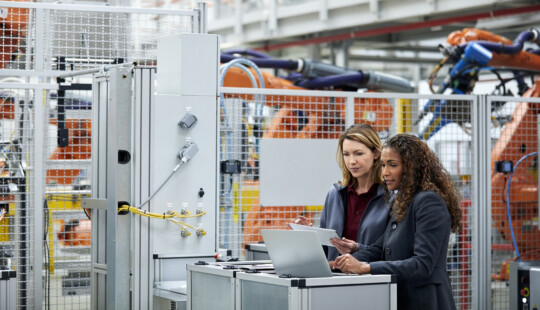Months before the pandemic ignited a global business crisis, industry analysts ranked robotic process automation (RPA) among the leading ingredients of digital transformation.
IDC predicted that by 2021, the contribution of “digital coworkers” would increase by 35 percent. RPA also made Gartner’s top 10 strategic technology trends in 2020 as an important part of hyperautomation.
Now, with all eyes on recovery from the COVID-19 pandemic, RPA is even more important for its ability to automate processes and augment people. Nowhere is this more apparent than in procurement, which is increasingly charged with bolstering business resiliency in an unpredictable world.
Tumultuous Times Demand Intelligent Procurement
Unlike most humans, RPA not only relishes, but excels at repetitive tasks. The more tedious and mundane they are, the better. For example, RPA can make short work of procurement processes like quickly finding out which of your suppliers are at risk during a pandemic.
“Suppose your supply chain is disrupted for the ventilator you’re making because it involves a supplier in a country you can no longer do business with,” said Eric Kavanagh, CEO of Bloor Group. “Doing these calculations manually to find an alternative supplier would take days or weeks. Using RPA, you could dynamically run through the list of other suppliers to see if they have a part in stock immediately.”
Kavanagh’s conversation was part of a breakout session during the virtual SAP Ariba Live event. The talk was hosted by Jo Peterson, vice president of Cloud and Security Services at Clarify 360, and also included Jason Brown, vice president of Solution Management, Technology, and Ecosystems for SAP Ariba and SAP Fieldglass.
Not Yesterday’s Automation
Injecting RPA capabilities into an employee’s daily procurement processes can dramatically speed up rote tasks, many of which have far greater urgency these days.
“Maybe some of your suppliers are at risk, and they’re small and could take advantage of the government support programs in the United States,” Brown said. “You need to find out if they’re financially strapped or in difficult straits. Using RPA, you could quickly look at your smaller size suppliers, see if they’ve acquired one of those loans indicating they may be at risk, apply that data into your supply chain, and find another supplier to reduce your risk.”
Pandemic or not, RPA can be tremendously useful in tackling time-consuming procurement processes. These could be common tasks such as updating supplier certification information from a third-party site or changing cost center data on a large batch of purchase orders. Accomplishing these activities in minutes instead of hours frees up employees to make more strategic contributions while delivering massive productivity gains to the company.
“As long as it’s something with the same repeatable steps for a process, any of those [procurement] steps can be automated,” Brown explained. “RPA can also be taught to do simple bidding practices.”
AI Boosts Intelligent Procurement
Brown was particularly excited about the business results from combining artificial intelligence (AI) with RPA, something he described as an ongoing learning process for both people and machines.
“Adding AI into an automated process is a natural extension…[because] you can start providing recommendations to shorten processes,” he said. “The algorithm starts learning based on how you’ve selected items. It makes decisions for you, then asks if it got it right. You can also look at the data afterwards and change the strategy, if needed, over time.”
People Will Never Go Away
Besides higher data quality and lower error rates, RPA’s big benefit is in improved employee morale. As automation eliminates tedious and repetitive activities, employees are happier because they are able to use their uniquely human traits such as creativity and ingenuity.
“While we might use AI or RPA to load the data or handle tedious processes associated with [breakthroughs] we need human intelligence to map the journey, aligning technology to the business process,” Kavanagh said. “People are going to have more fun, and they’re going to be more empowered because of technology like RPA.”
RPA Drives Supply Chain Agility
Both experts predicted an uptick in RPA across procurement as companies weather supply and demand fluctuations through a long recovery period. Kavanagh saw RPA helping companies reengineer supply chains for more dynamic and globally friendly sourcing strategies. Brown expected a significant increase in the number of SAP Ariba customers incorporating RPA into daily procurement activities.
“Procurement teams will analyze where they are spending a lot of time on the inefficient processes or the things that are just tactical in nature, try and replace those with an RPA, and then apply those people to more strategic items,” Brown said.
Follow me @smgaler



